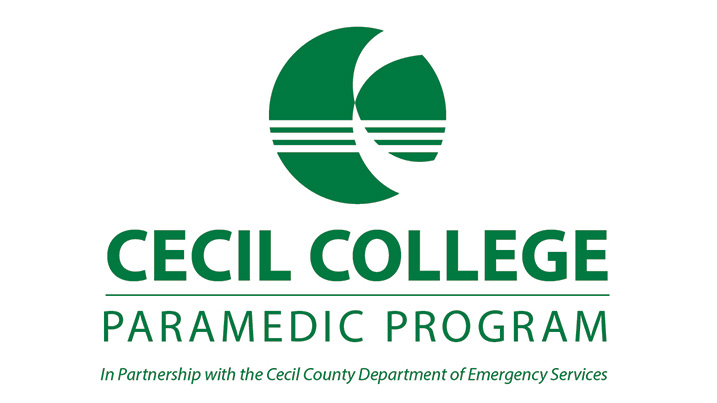Paramedic class sets standard of excellence
Published on December 7, 2022

ELKTON, Md. – Cecil College’s paramedic program is often regarded as one of the best training programs in the region. Recently, the program reinforced that belief when 100 percent of the graduates passed the National Registry Paramedic Psychomotor Exam to acquire their licenses. The unprecedented class pass-rate of this challenging exam is a source of pride and celebration for the College and the paramedic Class of 2022.
Taking the exam this year were 15 students who have completed the extensive 14-month program. The program combines classroom studies and clinical rotations, which equals more than a 40-hour-a-week obligation.
“This is an incredible accomplishment by a group of highly dedicated students who want to serve their communities,” said Robert F. Muller, Program Director of the Cecil College Paramedic Program. “Other community colleges in Maryland offer paramedic training, but what makes our program distinctive is the smaller class size combined with the level of engagement our clinical partners provide us.”
Cecil College’s paramedic students perform clinical work at Christiana Care/Union Hospital, Nemours Children’s Hospital, and Christiana Care Hospital, Newark DE campus. These partners provide the students with access and exposure to emergency rooms, surgical theaters, and intensive care units. At the same time, the local first responders’ services, such as Cecil County Department of Emergency Services and Singerly Fire Company provide field internships for the students to ride along in the ambulances.
“Another uniqueness of our program is the investment in time the instructors have with the students and the exposure to a wider range of best practices and innovative healthcare,” said Muller. “Because Cecil County is a rural community, students benefit from the county’s EMT system and the integration of the county’s EMS volunteers, which makes our program a more comprehensive system for the students work and learn.”
The students in the Class of 2022 come from Cecil County, West Grove (Pa.), Prince Georges County, Carroll County, and Wilmington (De.).
Career opportunities for licensed paramedics can be divided into three categories: 911 Emergency Services, Commercial EMS Ambulance Services, and Community and Integrated Healthcare Services.
The 911 Emergency Services involve going to people’s residences to provide emergency services, while Commercial EMS Ambulance Services provide medical transportation between medical facilities. The Community and Integrated Healthcare Services are designed as a proactive treatment to help keep people from needing to go to the hospital.
“The demand to fill positions in these careers is high. There is a huge void between the number of new paramedics coming out of school and the number of openings available,” said Muller. Currently, there are approximately 100 new paramedics in Maryland this fall, with more than 150 projected openings. According to Muller, making this shortage of trained professionals even more critical is the number of retirements expected in the next ten years.
The paramedic license is part of the medical field’s stackable credential system. Individuals can start with the EMR certificate, add the EMT credential, followed by the paramedic license, then go into critical medicine, community paramedic, flight paramedic, and more.
This year’s ceremony was bittersweet for the graduates as one of their classmates died just before entering the clinical portion of their program. Trevor Garrison McNabb passed unexpectedly at age 22 following his shift as an Emergency Medical Technician with the Singerly Fire Company in Elkton earlier this year.
“On their testing day, when they got their results, they were all talking about how Trevor should be there with them. That he was their guardian angel for getting through this program,” said Muller.

